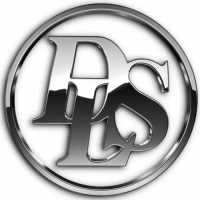Remote Control
Page 19
4.2.3.5 "All" Flow Control
When "All" flow control is selected, the DLS 50 uses both the RTS/CTS and the
XOn/XOff flow control.
This protocol controls the data flow in both directions.
4.2.4 Message Terminators
Any message sent to the DLS 50 through the serial interface MUST be terminated with
the line feed character (decimal 10, hex 0A, LF). To ensure that no characters were left
in the receive buffer of the DLS 50 from an old, incomplete command, you can send the
line feed character by itself before sending new commands. Messages from the DLS 50
are always terminated with a Line Feed character.
Note that some languages, including BASIC, may automatically append a carriage
return and a line feed at the end of messages. The carriage return character is not a
valid terminator, and will invalidate the last command.
The obvious solution is to send messages without carriage return. For example, in
BASIC, you can add a semi-colon ";" after any print to the IEEE 488 port. An alternate
solution is to append a semi-colon after the commands. This will make the DLS 50 see
the carriage return as a separate command, and discard it.
4.3 Data formats
The DLS 50 adheres to the IEEE 488.2 principle of Forgiving Listening and Precise
Talking.
The DLS 50 can accept data in the <NRf> format, which means that numbers can be
made of a combination of digits, signs, decimal point, exponent, multiplier, unit and
spaces. For example, any of the following are valid representation for 12000 feet: 12kft,
12.0 kft, 12000, .12e2k, 1.2 e4 ft, +12000. If a unit is appended to a number, it must be
valid in the current context. Note that the period separates the decimal part of a
number.

